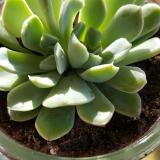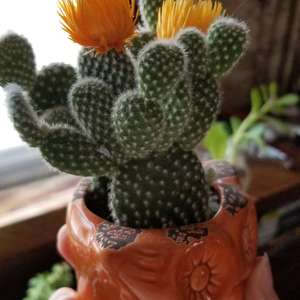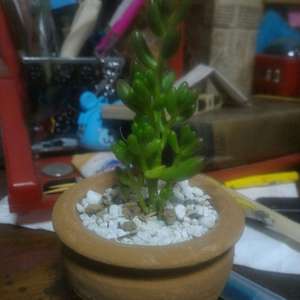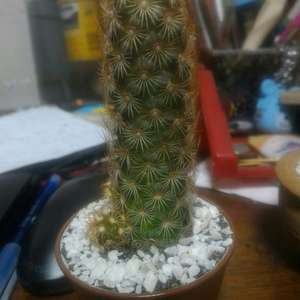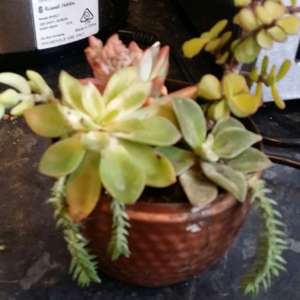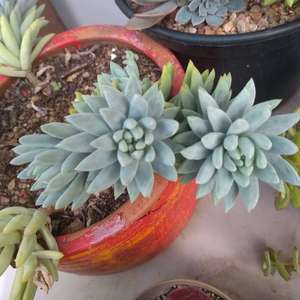文章
Andy
2018年12月26日

Facebook Pinterest Twitter Google+ LinkedIn StumbleUponCreate an Indoor Garden Under Stairs. This can be a unique place to introduce some greenery to your home.
The empty space under the stairs can be useful. You can store things there, this is the most common use. However, there are many other under stair ideas you can opt for, depending upon the type of space you’ve there. A mini library with bookshelves or a reading nook or a home office, if it’s big enough.
A dog house or playhouse for your kids can be an interesting idea too. And, if your kitchen doesn’t offer a lot of cabinet space and it’s near to that under the stair place, make a kitchen pantry. The Kitchn.com has a remarkable post on it, check it out here. You can make a wine cellar as well by taking inspiration from this post.
If the idea of making a wet bar to entertain your guest interest you–must try that. Besides all these under stair ideas, you can make a closet to store your clothes. A small bathroom, a mudroom can also fit well there. There are plenty of projects with tutorials available on the web to teach you how to do this.
The unique and nowadays popular use is indoor garden under stairs. If your space receives some bright indirect light there, or by using artificial lights you can do this. If both are not possible, you can create greenery by fake plants. Below are the 14 Garden Under the Stairs Ideas you can consider:
1.
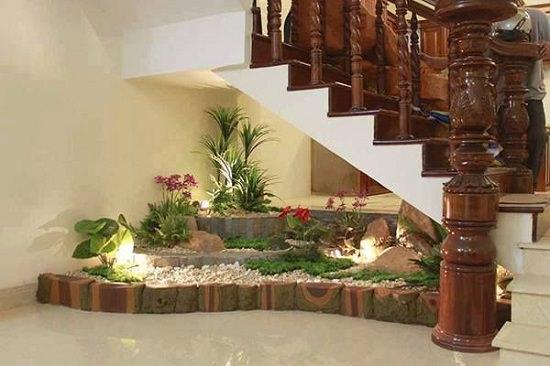

2.


3.
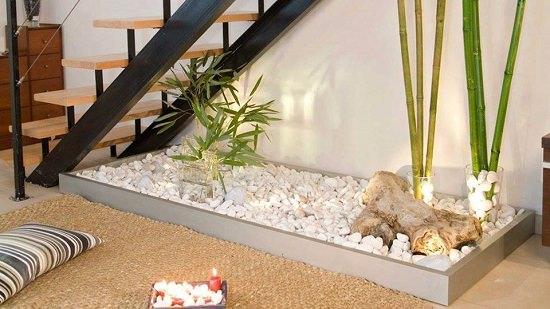

4.


5.

6.


Also Read: Most Important Indoor Gardening Tips
7.
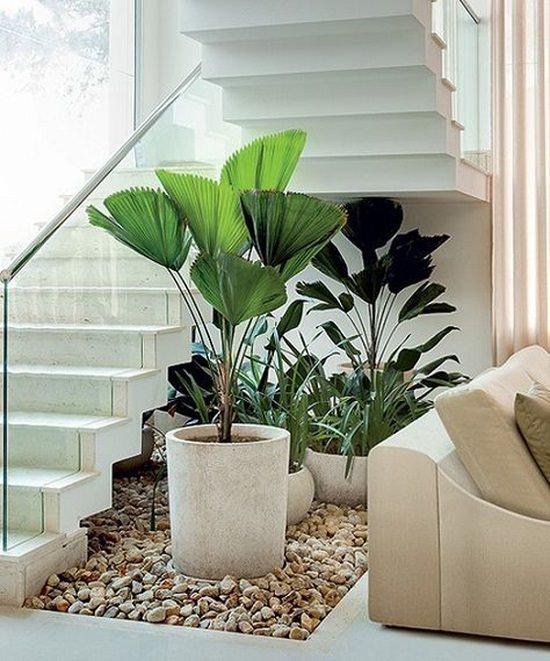

8.
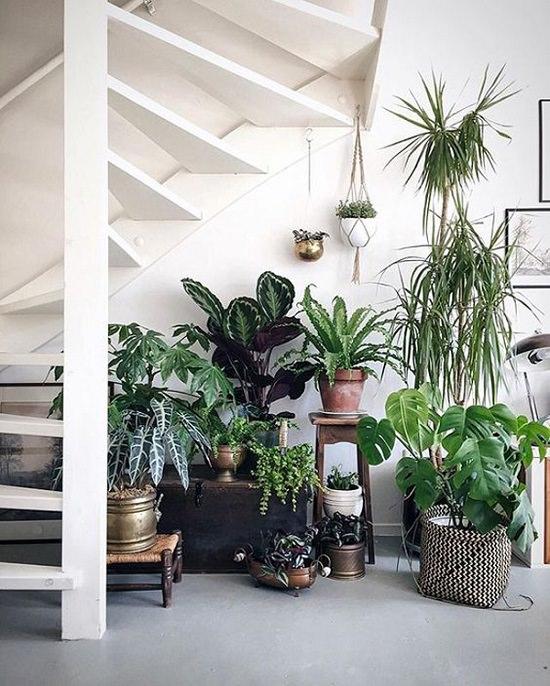

9.


10.


11.


12.
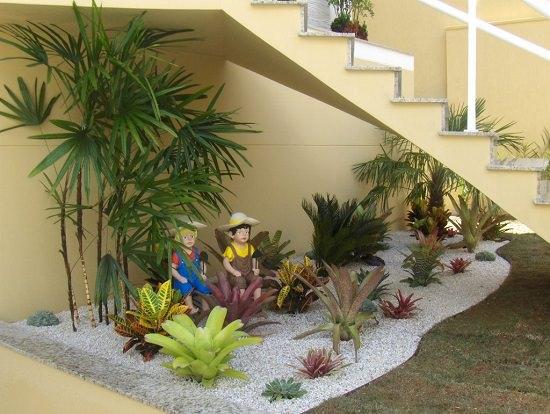

13.
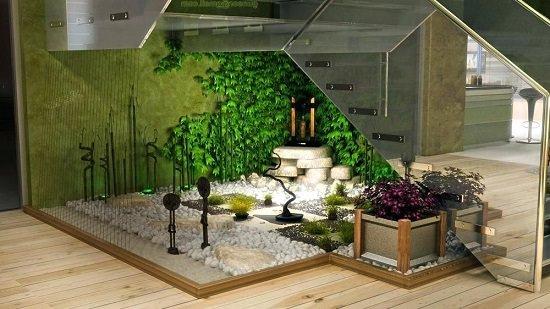

14.


15.


The empty space under the stairs can be useful. You can store things there, this is the most common use. However, there are many other under stair ideas you can opt for, depending upon the type of space you’ve there. A mini library with bookshelves or a reading nook or a home office, if it’s big enough.
A dog house or playhouse for your kids can be an interesting idea too. And, if your kitchen doesn’t offer a lot of cabinet space and it’s near to that under the stair place, make a kitchen pantry. The Kitchn.com has a remarkable post on it, check it out here. You can make a wine cellar as well by taking inspiration from this post.
If the idea of making a wet bar to entertain your guest interest you–must try that. Besides all these under stair ideas, you can make a closet to store your clothes. A small bathroom, a mudroom can also fit well there. There are plenty of projects with tutorials available on the web to teach you how to do this.
The unique and nowadays popular use is indoor garden under stairs. If your space receives some bright indirect light there, or by using artificial lights you can do this. If both are not possible, you can create greenery by fake plants. Below are the 14 Garden Under the Stairs Ideas you can consider:
1.


2.


3.


4.


5.


6.


Also Read: Most Important Indoor Gardening Tips
7.


8.


9.


10.


11.


12.


13.


14.


15.


0
2
文章
Andy
2018年12月26日

Facebook Pinterest Twitter Google+ LinkedIn StumbleUponLearn How to Grow Fenugreek in your garden or containers in your balcony. Growing fenugreek is easy. This quick growing vegetable is full of nutrients. 

Fenugreek or ‘Methi’ is native to Southwest Asia and widely cultivated for its medicinal and culinary uses. It’s an all purpose plant. Seeds are used as a spice, dried leaves as a herb, and fresh and tender leaves as a green leafy vegetable. It tastes little sweet with a touch of bitterness like mustard greens or bok choy. It can be a healthy alternative of spinach and any other greens.
USDA ZONES: All the zones as a seasonal crop
Difficulty: Easy
Growing Season: Spring, summer, and fall (year-round in warm climates, i.e., USDA Zone 9-11)
Other Names: Trigonella foenum-graecum (Scientific Name), Methi, Samudra methi, Shanbalile, Abesh, Hilbeh, Hilba, Helba, Halba, Kasturi methi
Growing fenugreek is easy, whether you live in a warm climate or cool, both on grounds or in containers. You can also grow it indoors on windowsills in small pots. You can also plant it in your balcony vegetable garden or patio, terrace, and rooftop with lettuce, spinach, and other greens.
How to Grow Fenugreek
Create a fenugreek bed with cilantro or grow it alone. You can cultivate it from seeds. It’s easy even for beginners.
Sow seeds ¼ inches deep in a good potting mix or soil in the desired spot or container when all the dangers of frost are passed, and the weather starts to warm up (for cool climate).
Remember, fenugreek hates to be transplanted. Leave 2 inches of space for each plant while sowing seeds. They’ll sprout quickly, and you’ll see seedlings just within 2-5 days.
Note: Buy best quality seeds from the garden center or online. You can also buy it from grocery stores or spice shops as its seeds are sold as a spice but beware of poor germination rate.
You can directly sow seeds but if you’ve bought them from grocery stores, soak them overnight to increase germination rate before planting.Growing Fenugreek in Containers


You can grow fenugreek in containers. It’s similar to any other green vegetable. Take a shallow but wide planter at least 6-8 inches deep with good drainage. Fenugreek has shallow roots so it won’t mind the low depth.
Fill the pot with rich potting mix. You can mix a 1/3 part compost or well-rotted cow or horse manure to it. Sprinkle seeds all over the pot and dust a thin quarter inch layer of soil briskly to cover them. Leave 1-2 inch of spacing between seeds. Don’t care about the spacing of seeds if you’re growing fenugreek as a microgreen.
Also Read: Best Microgreens You Should Grow
Growing Climate and TemperatureFenugreek grows well in a warm and hot climate when the temperature ranges from 50 to 90 F (10 C to 32 C).When planting it for seeds, grow it in spring or early summer. If you’re cultivating it to use as a vegetable or herb, then you can plant it anytime between spring to mid-fall.If you live in zone 9-11 or any warm place with frost-free winters outside the U.S., grow fenugreek year round.
Also Read: Best Basil Varieties for your Kitchen
Fenugreek Plant Care and RequirementsLocation
Fenugreek prefers neutral to slightly alkaline soil with pH level around 6.5-8.2. Plant it in a spot that receives at least 4-5 hours of direct sun with shade in the afternoon. Prefer a sunny spot if you’re growing it in a climate where is not intense and the weather is cold.
Watering
Do regular watering to keep the soil slightly moist. Care not to over-water the fenugreek plant and avoid waterlogged soil. This will impede the growth and kill your plant. If you’re growing fenugreek indoors or in a shady area, be vigilant about watering.
Fertilizer
Fenugreek does not require a lot of fertilizer. At the time of planting, you can mix manure or compost or time-based fertilizer in the soil, and that will keep it growing for a few weeks. Also, feed the plant with balanced liquid fertilizer, every other week for more robust growth.
Pests and Diseases
Fenugreek does not have many pests and diseases. Some pests and diseases that affect it are aphids, powdery mildew, charcoal rot, and root rot. You can easily save your plant from these problems by using organic pesticides regularly and watering properly.
Harvesting Fenugreek
In favorable conditions, within 20-30 days fenugreek will be ready for the first harvest. Trim the leaves gently to use as a leafy vegetable and prepare delicious recipes or air dry it to use as a herb. Leave the twigs, which will grow up again in 15 days. You can do this up to four times. To harvest fenugreek seeds, you will have to wait for 2-4 months, depending on the growing conditions.
It’s hot aroma like pepper and crunchy sour and sweet flavor gives it a distinctive taste, which you can’t compare with other vegetables. It is popularly used in Indian, Persian, Egyptian and Ethiopian cuisines, to prepare tastiest recipes. Fresh seeds are used to sprinkle on salad and dried seeds in pickles.


Fenugreek or ‘Methi’ is native to Southwest Asia and widely cultivated for its medicinal and culinary uses. It’s an all purpose plant. Seeds are used as a spice, dried leaves as a herb, and fresh and tender leaves as a green leafy vegetable. It tastes little sweet with a touch of bitterness like mustard greens or bok choy. It can be a healthy alternative of spinach and any other greens.
USDA ZONES: All the zones as a seasonal crop
Difficulty: Easy
Growing Season: Spring, summer, and fall (year-round in warm climates, i.e., USDA Zone 9-11)
Other Names: Trigonella foenum-graecum (Scientific Name), Methi, Samudra methi, Shanbalile, Abesh, Hilbeh, Hilba, Helba, Halba, Kasturi methi
Growing fenugreek is easy, whether you live in a warm climate or cool, both on grounds or in containers. You can also grow it indoors on windowsills in small pots. You can also plant it in your balcony vegetable garden or patio, terrace, and rooftop with lettuce, spinach, and other greens.
How to Grow Fenugreek
Create a fenugreek bed with cilantro or grow it alone. You can cultivate it from seeds. It’s easy even for beginners.
Sow seeds ¼ inches deep in a good potting mix or soil in the desired spot or container when all the dangers of frost are passed, and the weather starts to warm up (for cool climate).
Remember, fenugreek hates to be transplanted. Leave 2 inches of space for each plant while sowing seeds. They’ll sprout quickly, and you’ll see seedlings just within 2-5 days.
Note: Buy best quality seeds from the garden center or online. You can also buy it from grocery stores or spice shops as its seeds are sold as a spice but beware of poor germination rate.
You can directly sow seeds but if you’ve bought them from grocery stores, soak them overnight to increase germination rate before planting.Growing Fenugreek in Containers


You can grow fenugreek in containers. It’s similar to any other green vegetable. Take a shallow but wide planter at least 6-8 inches deep with good drainage. Fenugreek has shallow roots so it won’t mind the low depth.
Fill the pot with rich potting mix. You can mix a 1/3 part compost or well-rotted cow or horse manure to it. Sprinkle seeds all over the pot and dust a thin quarter inch layer of soil briskly to cover them. Leave 1-2 inch of spacing between seeds. Don’t care about the spacing of seeds if you’re growing fenugreek as a microgreen.
Also Read: Best Microgreens You Should Grow
Growing Climate and TemperatureFenugreek grows well in a warm and hot climate when the temperature ranges from 50 to 90 F (10 C to 32 C).When planting it for seeds, grow it in spring or early summer. If you’re cultivating it to use as a vegetable or herb, then you can plant it anytime between spring to mid-fall.If you live in zone 9-11 or any warm place with frost-free winters outside the U.S., grow fenugreek year round.
Also Read: Best Basil Varieties for your Kitchen
Fenugreek Plant Care and RequirementsLocation
Fenugreek prefers neutral to slightly alkaline soil with pH level around 6.5-8.2. Plant it in a spot that receives at least 4-5 hours of direct sun with shade in the afternoon. Prefer a sunny spot if you’re growing it in a climate where is not intense and the weather is cold.
Watering
Do regular watering to keep the soil slightly moist. Care not to over-water the fenugreek plant and avoid waterlogged soil. This will impede the growth and kill your plant. If you’re growing fenugreek indoors or in a shady area, be vigilant about watering.
Fertilizer
Fenugreek does not require a lot of fertilizer. At the time of planting, you can mix manure or compost or time-based fertilizer in the soil, and that will keep it growing for a few weeks. Also, feed the plant with balanced liquid fertilizer, every other week for more robust growth.
Pests and Diseases
Fenugreek does not have many pests and diseases. Some pests and diseases that affect it are aphids, powdery mildew, charcoal rot, and root rot. You can easily save your plant from these problems by using organic pesticides regularly and watering properly.
Harvesting Fenugreek
In favorable conditions, within 20-30 days fenugreek will be ready for the first harvest. Trim the leaves gently to use as a leafy vegetable and prepare delicious recipes or air dry it to use as a herb. Leave the twigs, which will grow up again in 15 days. You can do this up to four times. To harvest fenugreek seeds, you will have to wait for 2-4 months, depending on the growing conditions.
It’s hot aroma like pepper and crunchy sour and sweet flavor gives it a distinctive taste, which you can’t compare with other vegetables. It is popularly used in Indian, Persian, Egyptian and Ethiopian cuisines, to prepare tastiest recipes. Fresh seeds are used to sprinkle on salad and dried seeds in pickles.
0
0
文章
Andy
2018年12月26日

Facebook Pinterest Twitter Google+ LinkedIn StumbleUponThese Miniature Christmas Fairy Garden Ideas are perfect for tabletop decorations or keep them near your Christmas tree.1. Christmas Fairy Garden


Gather some little Christmas items and employ them in making this Christmas themed fairy garden. Find more here.
2. Fairy Garden Pot


Combine Christmas miniatures with fairy elements to recreate this stunning fairy garden in a pot DIY. Click here for the step-by-step details.
3. Tabletop Fairy Garden


If you’ve got limited space but you to display the outdoor Christmas tree decoration indoors, consider DIYing this fairy garden by BHG. This makes for a fantastic tabletop decoration for holidays without any endeavor.
4. Miniature Mushroom Tree


Make this miniature tree to company gnomes outdoors or near a Christma tree. You only need a miniature conifer, twine, mini bucket, and mushroom ornaments.
5. Lighted Fairy Garden


Add layers of fun and joy to your festive decor with this whimsical fairy garden idea. An amazing fairy garden that emits light!
6. Snow Globe
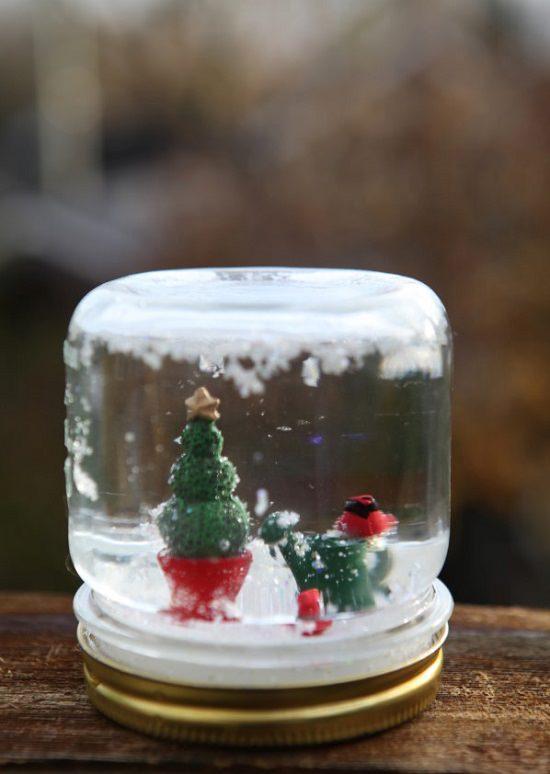

Glitter in a mason jar, this snow globe reflects Christmas appeal with a magical touch! This project can be done in a matter of a few minutes with minimum supplies. Check it out at Garden Therapy.
Also Read: Beautiful Mason Jar Fairy Garden Ideas
7. Miniature Terrarium Fairy Garden


Here’s an easy terrarium DIY, which you can create using Christmas and fairy ornaments. The fairy decor is evergreen and perfect for any season or festival.
8. DIY Snow Globes


Artificial snow, Christmas miniature ornaments, blue tack, fairy lights, and a glass dome are all you need to imitate this project. Get information at Lights4fun. Check out more garden globe ideas here.


Gather some little Christmas items and employ them in making this Christmas themed fairy garden. Find more here.
2. Fairy Garden Pot


Combine Christmas miniatures with fairy elements to recreate this stunning fairy garden in a pot DIY. Click here for the step-by-step details.
3. Tabletop Fairy Garden


If you’ve got limited space but you to display the outdoor Christmas tree decoration indoors, consider DIYing this fairy garden by BHG. This makes for a fantastic tabletop decoration for holidays without any endeavor.
4. Miniature Mushroom Tree


Make this miniature tree to company gnomes outdoors or near a Christma tree. You only need a miniature conifer, twine, mini bucket, and mushroom ornaments.
5. Lighted Fairy Garden


Add layers of fun and joy to your festive decor with this whimsical fairy garden idea. An amazing fairy garden that emits light!
6. Snow Globe


Glitter in a mason jar, this snow globe reflects Christmas appeal with a magical touch! This project can be done in a matter of a few minutes with minimum supplies. Check it out at Garden Therapy.
Also Read: Beautiful Mason Jar Fairy Garden Ideas
7. Miniature Terrarium Fairy Garden


Here’s an easy terrarium DIY, which you can create using Christmas and fairy ornaments. The fairy decor is evergreen and perfect for any season or festival.
8. DIY Snow Globes


Artificial snow, Christmas miniature ornaments, blue tack, fairy lights, and a glass dome are all you need to imitate this project. Get information at Lights4fun. Check out more garden globe ideas here.
0
0




